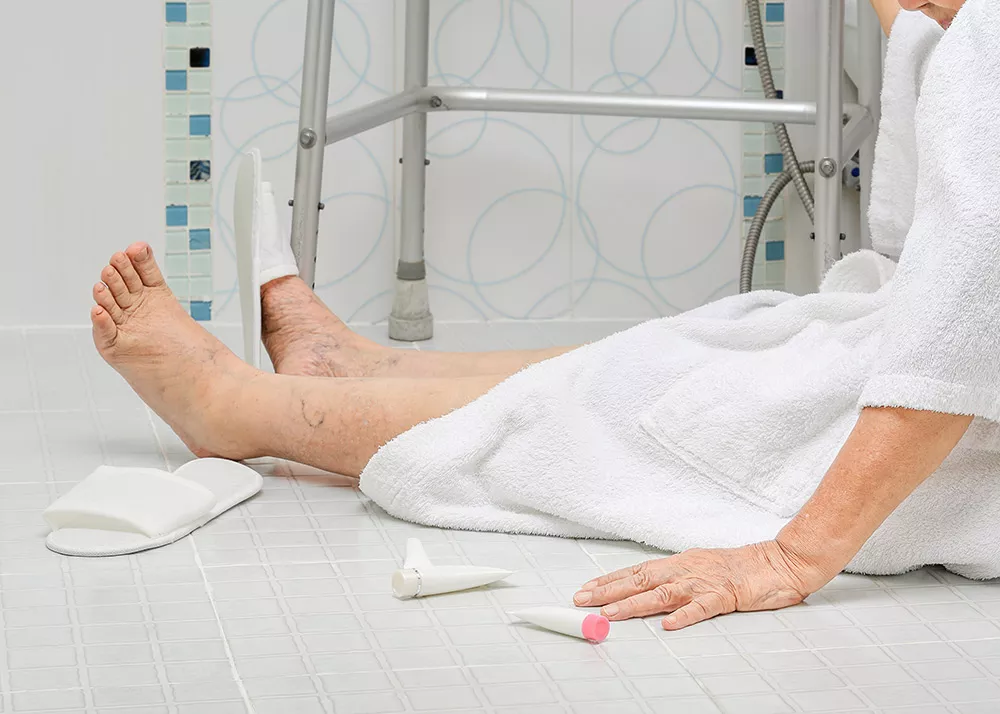Low blood pressure and the risk of falling

You stand up from a resting position and you suddenly feel weak and your knees buckle.
You’ve just experienced syncope, another name for fainting.
Usually the cause for syncope is low blood pressure.
Your brain makes a drastic move
When your blood pressure isn’t high enough to move blood efficiently to the brain, your brain senses the warning and takes quick action.
The upside of fainting is your brain quickly gets what it wants. Because you’ve quickly fallen to a flat position, blood can more easily flow to your brain again.
The downside is exactly that: you’ve fallen down and there’s no telling how badly you’ve injured yourself in the process.
Falls from fainting
Falls from low blood pressure can happen at any age, though older people are more apt to have them.
Falls are notorious for happening in the bathroom. The heat from a bath or shower can trigger the brain’s fainting response. And think of all those hard surfaces you’re likely to hit on your way to the floor.
Here’s how to reduce your fall risk
- Get your blood pressure checked by your primary care provider. Your doctor may check your blood pressure while you’re in a lying position, a sitting position, and then a standing position. This orthostatic blood pressure test can help determine how your body adjusts your blood pressure relative to changes in your position.
- Your doctor may recommend an electrocardiogram (ECG) to rule out other causes for your fainting related to the functioning of your heart.
- Ask your doctor about your current medications and whether they may be contributing to your low blood pressure.
- If you are in a care setting, like a hospital or rehab center, you may be identified as a fall risk. In that case, you’ll have extra assistance getting in and out of bed, walking in your room or hallway, and using the toilet and shower. Use that extra help. It could mean the difference between your speedy recovery and a fall that could set you back considerably.